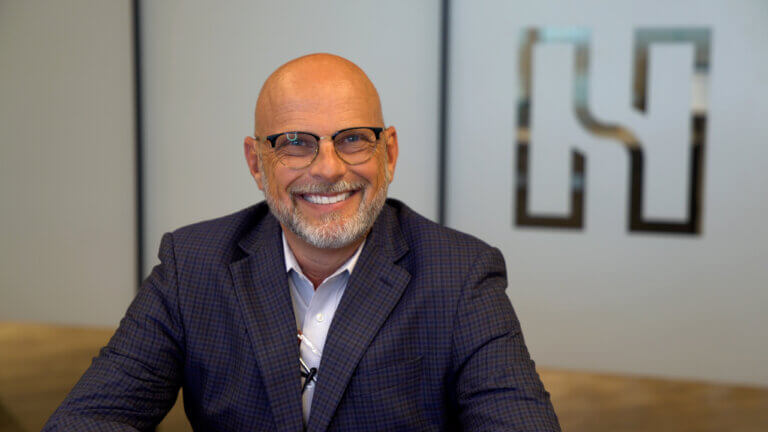
The construction industry should be desperate for more women. This industry has been highlighting Women in Construction week since 1998, when National Association of Women in Construction (NAWIC) founded this mission. Women bring a different perspective to the process of construction, whether it’s from department objectives to construction documentation language to problem solving on a jobsite. Overall, women can help improve this challenging industry. But I’m noticing a shift that’s exciting, and I think it will improve the construction industry as whole — potentially relieving long-standing challenges with labor shortages and advancing the industry forward.
I was asked to take part in a roundtable discussion on Women in Design and Construction at the recent Facades Plus conference in Atlanta. It’s not the first time I’ve been asked to take part in a discussion about women’s roles in the industry and steps we can take for improvement, but I have noticed recently that conversation shifting. Instead of only speaking to the female experience in construction or how we can better recruit women, the conversation almost always naturally shifts towards diversity, equity, and inclusion (DEI) and how to increase inclusivity across the industry as a whole.
That’s an exciting change because it signifies a readiness and a desire in our industry to take proactive steps in DEI efforts. Within my own company, I’m part of a Diversity and Inclusion task force made up of volunteers within our company who come from diverse backgrounds and experiences. Together, we’re looking for ways to increase diversity within our company, recruit more people from diverse backgrounds, improve inclusivity for employees, and find opportunities to partner with more minority owned businesses and trade partners. My company has been building for more than 80 years, and the fact our executive leadership pushed to create this task force and are actively listening to our suggestions mirrors what I think is an industry-wide push to engage with and seek out new and diverse talent.
So, how do we actively diversify our industry and build equity? After discussing this topic with my peers at the recent roundtable, I think it boils down to two key efforts — recruitment and training.
Recruitment: Think Outside of the Career Fairs
To bring people into the industry, you must be intentional about how you recruit them. We all should be actively seeking out new talent, not waiting around for the best and brightest to come to us. The labor shortage has plagued our industry for years and isn’t showing many signs of improvement. We know that diversified recruitment efforts are a solution, we even wrote about it here during last year’s Women in Construction Week. Within my own team in the Technology division, we’re moving away from simply attending Career Fairs. After all, a Career Fair is a great place to recruit someone who knows what career they want. But what about all the bright, talented young people who haven’t even considered a career in construction? What about the skilled individuals who aren’t attending college but could thrive in a construction position? What about the student who is great with computer technology but can’t fathom a role exists for them in construction?
This past year, I compiled a list of every school I could find that had any Virtual Design and Construction (VDC) class or program and I’m beginning to try to get in front of the classes to simply show them the many different careers available that directly impact construction projects but don’t require a building or engineering degree. Organizations like the Construction Summer Academy for Young Women through Auburn University and SHE Builds Houston through the Construction Career Collaborative are engaging students in high school and showing them the many different opportunities in our industry — high-earning careers both with and without a college degree requirement. We, as an industry, need to engage potential employees early and simply show them what is out there in terms of construction jobs.
Companies should review the list of schools where they recruit. How many historically black colleges and universities (HBCU’s) are they visiting? How many trade schools or technical colleges are they going to? One of the greatest things about our industry is no one comes in knowing everything, so everyone has an opportunity to learn and grow. That means that anyone with the right drive for success, team-minded mentality, ability to learn from mistakes, and desire to improve can thrive in a construction role. When you look at it that way, it doesn’t really matter what major someone is pursuing or what school they’re attending, our recruitment efforts need to expand and focus on the individuals. That’s how we can recruit diverse talent.
Training: Opportunities for Growth and Creating Seats at the Table
When I say training, I’m talking about both training for individuals already in our industry and using training as a tool to bring in new talent. During the roundtable, we all shared stories as women in the industry who have come up against someone who didn’t take us seriously or honestly, didn’t think we should be there. The good news is almost every story ended with that other person learning and growing. It’s hard being a woman in a male-dominated industry, that’s one of the reasons Women in Construction Week exists. One of my peers on the panel told a story about being a college co-op and taking her assignment of creating the punch list very seriously. When she handed the very long, detailed punch list to a much older, more experienced superintendent, he was less than thankful. But in the end, that man thanked her for her thorough approach to the punch list, because his team had only three repairs to make after the final walk through — they had fixed everything during punch thanks to her.
These stories highlight that people can grow and creating inclusive environments takes effort and training. There’s Emotional Intelligence training, D&I training, and Leadership training that can help employees improve their communication skills and expand their perspective to be better co-workers and leaders. Mentorship is also a crucial part of training. Providing mentorship to new employees shows that the company is there to help them navigate their new job and long-term career. It also provides new learning experiences and helps give employees a sense of belonging. Companies who embrace the opportunity to train and teach in multiple forms will create more inclusive and inviting environments where people of all backgrounds feel more comfortable. If your company isn’t a place where people want to work, all the recruitment efforts in the world won’t matter.
A different take on training is making a concerted effort to not jeopardize talent. What I mean by that is not overlooking a capable and talented team based on required experience or qualifications. The difficulty with required experience is that if you’re never been given an opportunity to gain experience, you’ll never qualify or be considered. This is an issue our D&I task force has identified and is working to improve. In proposals, it’s becoming more common to ask general contractors how they plan to bring more minority and women-owned business enterprises (MWBE) on to the project. But DEI efforts need to be genuine and not just the checking of a box. We need to create seats at the table. Our task force is working to reach out to and provide training and opportunities to gain experience to MWBE’s and minority-owned trade partners. The talent is out there. The regions where we build do not have a lack of diversity, just a lack of recruitment and outreach training from industry leaders.
A sentiment brought up and shared by us all on the roundtable was that, although we love speaking as women in the industry, we genuinely hope there’s no need for these kinds of panels in 5 to 10 years. We hope we can move our industry forward through recruitment and training and not still be talking about, “how can we possibly recruit more women to the industry?” I think it’s a positive sign that we’re expanding that question to, “how can we diversify our industry?” It shows an understanding that it’s not an issue of the industry being simply male dominated. The industry is in desperate need of diversification as a whole. As people with different backgrounds, educations, and experiences join this industry, I believe we will see improvement in the way we solve problems, overcome challenges, and build into the future. And I for one am excited to see it.

